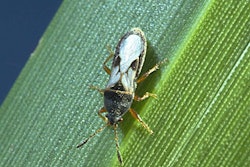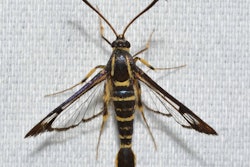Has your regular herbicide been losing ground? Don’t automatically blame it on resistance. Chances are it has more to do with varying environmental factors than turf suddenly developing a resistance to the herbicide you’re using, according to Kyle Miller, senior technical specialist, BASF Professional Turf & Ornamentals. “I am not aware of a single residential lawn that has resistance,” Miller says. “In every case where we’ve been called to diagnose a problem where resistance was suspected, we have been able to rule it out.”
Instead, environmental conditions are much more likely to cause a fluctuation in the efficacy of your selective herbicides. “If it’s been warm and dry and turf is weak and you’re not getting 100-percent control, it’s much more likely to be turf just can’t compete under those conditions,” Miller says.
Miller adds there are several reasons residential turf seldom builds up a resistance to even common herbicides: Properties change owners; different owners will probably use different herbicides (or contract with different lawn care companies); and a typical herbicide regimen will still call for only a handful of applications over the course of a year. “The treatment program for a home lawn isn’t nearly as intense as that for a golf course, where herbicides are being used much more frequently and resistance is a real threat,” he says.
Another element that helps combat the threat of resistance: The herbicide market is large. It offers more choices than any other segment of chemical application for turf. This in itself increases the likelihood that lawn care operators and landscape contractors will continue to mix it up when it comes to dealing with weeds.
“I see very few unmet needs,” says Miller. “We have herbicides that can pretty much control whatever we’re after. Even old ones are effective and continue to be widely used. The number of choices is huge.”
Does this mean there is no room for improvement? Not at all. Miller believes while the focus may shift from developing new active ingredients to finding new combinations of existing active ingredients, there is still room for new products in the market.
Taking good and making it better
Instead of looking for the next big thing, companies that develop turf chemicals have shifted their focus to fulfilling niches in herbicidal control of weeds.
“The chance of discovering a new herbicide that will displace an entire segment is slim,” says Miller.
“Especially something that’s bigger and better. What there is room for are niche products that satisfy target needs. For example, a new herbicide that pre-emergently controls nutsedge. It’s not going to be huge news, but it’s taking an existing chemistry and improving it.”
BASF’s FreeHand 1.75G is an example of this type of development. It takes a tried-and-true active ingredient (pendimethalin) and combines it with a new active ingredient (dimethenamid-P) to fill a void for landscape ornamentals, offering a broader range of control. The company also has developed a new product combining existing active ingredients to produce something more specialized for lawn care.
Onetime herbicide combines the new Drive XLR8 with MCPP and dicamba to control broadleaf weeds and grasses. It specifically offers faster-acting control of weeds such as crabgrass.
Other companies are seeing the benefits of this type of research and development, too. Recent product introductions include FMC’s Echelon 4SC, which combines sulfentrazone and prodiamine for knock-down of crabgrass that’s both quicker and long-lasting. And its Solitare herbicide, which combines existing active ingredients (sulfentrazone + quinclorac), is formulated to be an all-in-one post-emergence weed control product designed to combat any combination of crabgrass, sedges and broadleaf weed problems in a single application.
Miller says it’s this type of demand for new products that will keep development moving forward in a market already offering so many products. And as an added benefit, many of the new products entering the market will have lower application rates and a broader range of weed control.
“At the end of the day, the leader in motivating someone to buy or use a product is performance,” he says. “The product must perform better than what you’re using today. And if, as a side benefit, we can also decrease application rate and frequency, even better. Everyone is looking for maximum performance, though. You want to be able to make one application to clean up that weed and not get another call about it.”











